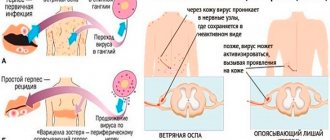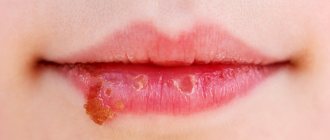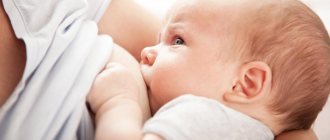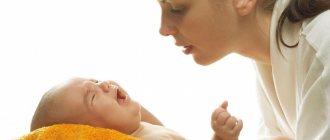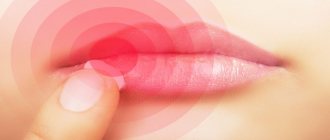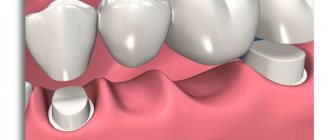Both adults and children are susceptible to fungal and infectious diseases. One of the most common ailments that mainly affects the female body is candidiasis (thrush). This disease is so common that it is diagnosed in almost every adult woman. Infantile thrush is no less common.
The nature of the disease and its causative agent are the same in both adults and children. The candida fungus (Candida albicans), which causes thrush, is constantly present in the human body (on the mucous membranes, genitals and occasionally internal organs), being part of the microflora, without causing harm and without showing any symptoms. Therefore, the disease is provoked not so much by the fungus itself, but by the state of the body and external factors that contribute to the growth of the fungus and the development of infection.
Children's vulvovaginal candidiasis most often affects adolescents (mainly girls) and newborns of both sexes.
There are two forms of the disease:
- a form with pronounced symptoms according to the standard clinical picture;
- asymptomatic form, which is detected only as a result of laboratory tests.
There are also such types of thrush in children (vulvar candidiasis in girls), as oral candidiasis (develops in the mouth of newborns) and genital candidiasis (mainly in preschoolers and adolescents). In any case, the child must be shown to a specialist, since the infection indicates a decrease in immunity, which can lead to even more complex and unpleasant consequences.
Candidiasis in children: consequences
Like any sexual disease, candidiasis in a girl is fraught with disruptions to the reproductive system, which begins during intrauterine development. Before puberty, girls have very delicate genital mucosa, so even a mild form of infection can lead to fusion (synechia) of the labia and vagina.
Thus, parents should carefully monitor the general health of the girl and her external genitalia, and later, when the child is able to take care of herself, explain how to take care of herself.
Thrush in children: symptoms and types
Symptoms depend on the form and type of candidiasis:
- candidiasis (without symptoms and harm to the health of the carrier);
- acute and chronic forms;
- recurrent and persistent (complicated) forms;
- secondary candidiasis, which develops with non-fungal lesions of the genital organs.
Vulvovaginal candidiasis (thrush, vulvar candidiasis) in children and adolescents is manifested by the following symptoms:
- itching and burning in the perineum (constant or worsening in warmth, in a hot bath, when walking and wearing the wrong underwear (too tight, synthetic, etc.);
- pain and burning when urinating.
As a result of constantly appearing signs, the child may develop a fear of taking a bath or urinating, as well as before sexual intercourse (in sexually active adolescents), up to severe nervous disorders.
In the acute form of thrush in children, the following occurs:
- hyperemia and swelling of the external genitalia and vagina;
- discharge (cheesy or creamy) with a sharp sour odor;
- in some cases, a grayish-whitish coating is observed on the walls of the vagina.
In the chronic form of thrush in children, the following occurs:
- less pronounced symptoms (itching, burning, redness, etc.), which may intensify before menstruation (in menstruating girls);
- less intense swelling and mild or completely absent plaque;
- changes in the skin of the labia and around the vagina.
If you notice symptoms of thrush in your child, you should urgently consult a doctor to undergo a course of treatment and prevent it from becoming chronic or recurrent.
Thrush in children: causes
In adolescents, the main cause of thrush is a hormonal imbalance, which occurs due to the growth and development of the child or due to disruption of the endocrine system.
Other causes that act as factors in the occurrence of childhood vulvar candidiasis:
- reduced immunity;
- antibiotic treatment (uncontrolled);
- poor or unhealthy diet (especially abuse of sweets, fast food, etc.);
- smoking and alcohol;
- early onset of sexual activity;
- improper hygiene or its complete absence;
- hypothermia;
- anatomical features of the reproductive system;
- infection from the inside (for example, from the intestines);
- after contact with household objects or in public places (swimming pool, etc.);
- during childbirth from the mother;
- excess weight (at the stage of obesity);
- anemia and other diseases;
- allergic reactions.
As you can see, there are a lot of answers to the question “Where does thrush come from in children?” Moreover, as a rule, a whole complex of problems leads to thrush. Another factor is age. In infants, thrush usually appears as a result of parental neglect, in teenage girls - as a result of changes in the hormonal system, etc.
If there is any suspicion of candidiasis or another infection, it is necessary to take the child to a doctor who will conduct an examination and prescribe a course of treatment and recovery, as well as give useful tips on how to prevent infection or relapses. The medical center employs specialists in pediatric gynecology and uses modern diagnostic equipment.
Initial appointment
At the initial appointment, the doctor examines the child’s genital organs to assess the disease and state of health. The doctor also finds out the possible causes of thrush in a child, prescribes tests to understand how to treat, since the course is prescribed individually for each specific clinical case.
Diagnosis of the disease
In some cases, tests and examinations are required:
- Ultrasound of the pelvic organs
; - blood and urine tests;
- taking smears and culture for fungi of the genus Candida;
- stool analysis for worms and intestinal dysbacteriosis
If children are suspected of having any diseases other than thrush, additional tests are prescribed. Also, if thrush has caused a nervous shock and affects the psychological and mental development of the child, then a consultation with a psychotherapist is prescribed.
Procedure and treatment regimens for vulvovaginal candidiasis in school-age children and teenage girls
The procedure and treatment regimen are determined individually and depend on the type and stage of development of the disease, the causes of infection and the presence of concomitant diseases. A visit plan is also assigned individually, since for one patient the first consultation and follow-up appointment will be enough, while for others several appointments will be needed.
Lower urinary tract infections in children: options and clinical recommendations
31.07.2020
5408
1
K.I. Kramareva
Pediatric urologist-andrologist of the State Budgetary Healthcare Institution of the Children's Hospital 133 of the Department of Health, chief freelance specialist in pediatric urology-andrology of the Northern Administrative Okrug, Moscow
In the program “An Hour with a Leading Urologist,” Victoria Anatolyevna Shaderkina’s guest was Ksenia Ilyinichna Kramareva, a pediatric urologist-andrologist at the State Budgetary Healthcare Institution of the Children’s City Hospital 133 DZM, the chief freelance specialist in pediatric urology-andrology of the Northern Administrative District of Moscow. She spoke about the features of treating urinary tract infections (UTIs) and, in particular, cystitis in children.
Urinary infections occur in children of both sexes and are a common reason for visiting a pediatric urologist or pediatrician. Bacteriuria is an increase in the number of bacteria in the urinary tract (more than 105 CFU/ml), which can lead to the development of an inflammatory process.
Its main pathogens are Escherichia coli, Klebsiella pneumoniae, Proteus mirabilis, Staphylococcus epidermidis and Enterococcus faecalis. At the same time, the etiological spectrum of pathogens of acute uncomplicated infections of the upper and lower urinary tracts (pyelonephritis and cystitis) is similar. The dominant pathogen is E. coli, which accounts for 70–95% of disease cases. In 5–19%, coagulase-negative staphylococci are isolated, the main sample being Staphylococcus saprophyticus. In other cases, the pathogens may be other enterobacteria (Proteus mirabilis, Klebsiella spp.) and enterococci (Enterococcus faecalis).
Urinary tract infections in children, as well as in adults, include cystitis, urethritis, acute and chronic pyelonephritis, as well as urosepsis.
Cystitis is an infectious and inflammatory disease of the bladder wall of bacterial origin. Girls get it three times more often than boys, and the relative risk of relapse increases with age.
On average, relapses occur in 30% of girls within one year of the first episode and in 50% within five years of the first episode. In boys, relapses occur in 15–20% within one year of the first episode.
There are a number of risk factors for the development of cystitis:
- a decrease in the body’s overall resistance due to hypovitaminosis, stress, hypothermia or changes in hormonal levels during puberty;
- obstruction of urine flow from the bladder (for example, posterior urethral valve);
- circulatory disorders of the pelvic organs;
- traumatic injuries to the bladder mucosa during endoscopic examinations and operations;
- endocrine diseases (diabetes mellitus), metabolic disorders;
- sexual activity, especially early, and in the presence of hypermobility or ectopic urethra in females;
- the presence of allergic reactions (including to personal hygiene products - shower gels, soap, etc.);
- congenital anatomical and structural changes.
Cystitis in children can be classified according to the ways the infection enters the bladder:
- ascending - the most common variant of infection from the external environment through the urethra. A variant of this path is the contact path - in the presence of inflammatory diseases of the organs surrounding the bladder. Direct infection of the bladder can occur in the presence of urinary fistulas or be a consequence of various instrumental manipulations (catheterization of the bladder, cystoscopy, etc.).
- descending – infection from the upper urinary tract and kidneys in chronic pyelonephritis;
- hematogenous - rare, can occur in the presence of a distant focus of chronic infection, including in the pelvic organs.
Another type of classification is according to the clinical course: acute, recurrent and interstitial. Cystitis is also divided according to the involvement of the bladder in the pathological process: primary and secondary (due to some disease).
Due to the development of the disease, cystitis is divided into infectious, allergic, chemical and radiation. According to the type of infectious agent - nonspecific (caused by its own opportunistic microflora) and specific (chlamydia, mycoplasma, ureaplasma, tuberculosis, candidiasis, etc.).
Acute cystitis in children is characterized by a sudden onset caused by some provoking factor. The severity of symptoms increases during the first two days, and in the case of timely prescribed therapy, rapid regression is observed. The most common symptoms of acute cystitis are frequent painful urination, pain in the lower abdomen, the appearance of blood at the end of urination, imperative urge to urinate and associated urge urinary incontinence. Sometimes there may be pain in the lower abdomen and back, as well as fever and chills. The difficulty of diagnosis in young children lies in the difficulty of interpreting symptoms.
In a recurrent course, the manifestation of symptoms of the disease is observed at least twice in six months or three times in a year. The reasons may be reinfection, interrupted or incorrect treatment, uncontrolled use of antibiotics and failure to comply with personal hygiene rules.
Recurrent cystitis in children is a consequence of a previous inflammatory disease and is secondary. Clinical symptoms are similar to those of acute cystitis. A variant of the course is possible with minimal complaints and constant laboratory signs (leukocyturia, bacteriuria), with the absence of hyperthermia.
The main points for diagnosing cystitis are a thorough history taking, especially in young children, and an active conversation with parents or legal representatives. There are no templates for conversations with a child or his family - everything is very individual. When talking with older children, it is necessary to obtain information about possible sexual contacts. Laboratory methods include urinalysis, sterility culture, and ultrasound examination of the urinary tract.
When performing a general urine test, leukocyturia, bacteriuria, erythrocyturia, the presence of epithelium and casts can be detected. False proteinuria is also possible, caused by the breakdown of a large number of blood cells.
If there is a suspicion of an inflammatory process in the urinary organs, a recurrent course of the disease or asymptomatic bacteriuria in the presence of complaints, bacterial urine culture is prescribed to determine sensitivity to antibiotics. It is important both for directly determining the sensitivity of pathogenic microflora to antibiotics and for monitoring the effectiveness of antibacterial treatment.
When prescribing an ultrasound examination of the urinary tract, it is important to remember that changes in the bladder on ultrasound are not specific and must be confirmed by the clinical picture and laboratory data.
In all cases, especially in young children, it is necessary to carry out a differential diagnosis of acute cystitis with acute pyelonephritis. Thus, with cystitis, the temperature rarely rises above 38 ° C, and there may be no symptoms of intoxication and lower back pain, which always accompany acute pyelonephritis. At the same time, with cystitis there is always dysuria, often hematuria. Pyelonephritis is also characterized by changes in blood tests.
Also, in some cases, differential diagnosis with neurogenic bladder dysfunction, vulvovaginitis and dysmetabolic nephropathy is required. We should not forget that these diseases can be present in parallel with cystitis.
The key points in the treatment of cystitis in children are the elimination of symptoms and bacteriuria in the acute period, the prevention of the development of scar changes in the bladder wall, as well as the prevention of relapses.
Ksenia Ilyinichna identified several basic elements for the treatment of cystitis:
- diet (first of all, exclusion of spicy and salty foods, spices, preservatives, smoked foods);
- compliance with the drinking regime (water, cranberry juice, weak tea, exclusion of concentrated juices and any carbonated drinks);
- compliance with the urination regime (the bladder should not be overfilled);
- antibiotic therapy (elimination of pathogens);
- herbal medicine (complex therapeutic effects).
According to the treatment algorithm for uncomplicated cystitis, fosfomycin trometamol (from 5 years of age) and nitrofurantoin are empirically prescribed. Repeated examinations are carried out after 3 days and 12 weeks.
If ineffective, urine culture is performed and therapy is adjusted. However, it should be remembered that even with successful treatment, further prevention of relapse is necessary. In particular, for this purpose, after reducing the severity of symptoms, herbal medicine is prescribed.
A longer course of antibiotic therapy is indicated for the treatment of cystitis in patients with risk factors for recurrent and chronic infection. These include cases of clinical symptoms persisting for more than seven days, as well as the presence of diabetes mellitus and other metabolic disorders in patients.
In recent years, there have been clear trends in increasing resistance of uropathogenic E. Coli strains to antibacterial drugs that are traditionally widely prescribed for community-acquired urinary tract infections: ampicillin (resistance > 30%) and co-trimoxazole (resistance 20-30%). The lowest level of E. Coli resistance is observed to gentamicin and fosfomycin.
Speaking about the treatment of cystitis, it is necessary to note the therapeutic possibilities of using non-antibacterial drugs as part of complex therapy. Thus, in 2015, the World Health Organization published a Global Action Plan on Antimicrobial Resistance, which significantly contributed to the growing interest of the scientific community in the use of non-antibiotic methods for the treatment and prevention of recurrent urinary tract infections, including the use of D-mannose, probiotics and biologically active substances contained in cranberry fruits.
In particular, D-mannose is a non-metabolizable monosaccharide, an isomer of glucose. It has selective activity against pathogenic strains of E. Coli. By binding E. coli receptors, D-mannose prevents their attachment to the epithelium. Analysis of the results of clinical studies made it possible to include D-mannose for the prevention of recurrent UTIs in the Russian recommendations for their treatment for 2021.
Cranberries contain proanthocyanidins A and B, substances that provide their red color. In addition, proanthocyanidins A have an important property - they do not allow bacteria to attach to the walls of the bladder. The European Association of Urology recommends taking 36 mg of cranberry proanthocyanidins per day to prevent cystitis.
Vitamin C creates an acidic environment in the bladder. This is an important part of the fight against bacteria, since they require an alkaline environment to live and reproduce. The vitamin is an antioxidant, which means that it reduces the effects of inflammation in bladder cells and promotes rapid healing and restoration of its walls.
The listed substances can be used as part of phytotherapeutic preparations. In particular, all three mentioned components contain the drug Cystenium II. When included in a complex therapy regimen for recurrent cystitis, it reduces the likelihood of relapses and increases the effectiveness of antibacterial treatment. At the same time, the plant components do not cause resistance in bacteria, so the effectiveness of the drug does not decrease with frequent use. The drug can be used in complex therapy together with antibiotics, a course, and also for prophylaxis during the appearance of factors provoking cystitis. Cystenium II is approved for use in pregnant women and children over 7 years of age. It is taken 1 tablet 1-2 times a day with meals. One dose of the drug should be planned for the evening, since at night there is stagnation of urine and a favorable environment for the proliferation of microorganisms arises. As Ksenia Ilyinichna emphasized, only this drug, among other products in the same category, contains all three active components.
Non-medicinal prevention of cystitis is also important: avoiding hypothermia, maintaining personal hygiene, regularly visiting the toilet and treating foci of chronic infection in the body.
The material was prepared by V.A. Shaderkin's performance can be viewed on Uro. TV in the “An Hour with a Leading Urologist” section
Comments
Oreshkov Vasily Sergeevich - 08/05/2020 - 10:24:14
Thank you very much
To post comments you must log in or register
Treatment plan
How to treat vulvar candidiasis (thrush) in children of school age, and not only?
Basically, treatment involves eliminating the pathogen and stopping its reproduction, which will therefore eliminate the symptoms. Only a good specialist can treat the disease correctly and effectively, who can prescribe:
- antifungal drugs and antiseptics (topically);
- antibiotics;
- ointments and medicinal baths;
- therapy to restore and strengthen the immune system;
- therapy to restore the microflora of the reproductive system.
Which course of treatment will be chosen and prescribed depends on the specific case and the reasons that led to vulvovaginal candidiasis in a teenage girl and a smaller child.
Repeated appointment
At the follow-up appointment, the doctor assesses the child’s condition and checks how effectively the chosen regimen works. If no positive dynamics are observed, then repeated diagnostics and selection of new methods for treating thrush in the child are prescribed.
Control reception
The control reception is an important point. The doctor prescribes it to see how the child recovers after a full course of treatment, to see if there are any relapses or suspicions of them. It is also possible to prescribe physiotherapy and rehabilitation (for example, if a long course of antibiotics has been prescribed). A follow-up appointment is usually scheduled after 21–30 days or later.
Treatment result
The disease can be cured, but the timing of treatment is individual and depends on the stage and causes of thrush in young children or teenage girls. All details of treatment are discussed individually at a doctor’s appointment. If there is a suspicion that the parents are infected, then both parents are treated.
Prevention
Thrush in children is a fairly common occurrence, especially under “favorable” conditions for the disease. To protect the child, it is necessary to take preventive measures:
- carry out proper personal hygiene of the child in accordance with age;
- wear the correct underwear;
- normalize nutrition (moderate or limited consumption of sweets, starchy foods and fast foods, more fruits, vegetables, etc.);
- Strengthen your immune system by taking vitamins and exercising.
Compliance with the rules of personal hygiene at home and in public places will also help avoid the occurrence of vulvar candidiasis and other unpleasant diseases in a teenage girl or young child.
Treatment of thrush
For the treatment of children, the principle of mandatory elimination (eradication) of the pathogen is applied. It should be remembered that first of all it is necessary to create conditions that are detrimental to the life of cells of the fungus of the genus Candida, and only then eliminate disorders of the vaginal microbiocenosis.
Stage 1: strengthening local and adaptive immunity in the child.
Oral administration of Bifidum BAG in age-specific dosages. Course 40 days.
Locally: for girls only applications on pads or napkins and baths! – 1-3 ml Bifidum BAG 1 time per day. Recommended course is 10-14 days. If necessary, the course can be extended to 28 days.
Stage 2: following a diet for candidiasis for 40 days.
- limit sweets: chocolate, sugar, sweets, buns, sweet carbonated drinks;
- use unrefined unrefined products for food (bread made from wholemeal flour, rolled oats - boiled for 15 minutes, etc.)
- be sure to use dietary fiber in food: corn porridge (mamalyga), brown rice, apples, plums;
- include in your diet foods that actively displace Candida fungi from the body: carrots, cloves, lingonberries, capsicum, etc.
- 5. do not use food products with preservatives, dyes and other chemicals. The human genetic apparatus is not designed for these chemicals. It is intended for food products only.
- remove products with yeast for 1-2 months: yeast bread, kvass, etc.
The use of liquid probiotics Bifidum BAG and Trilact with active bifidobacteria and lactobacilli in basic treatment regimens for urogenital infectious and inflammatory diseases increases the effectiveness of treatment and reduces the frequency of thrush relapses. The effect is enhanced by the combined use of probiotics (externally and internally), i.e. with simultaneous correction of intestinal and vaginal microcenoses.
Prophylactic use of liquid concentrates Bifidum BAG and Trilact in optimal age-related doses prevents the development of dysbiotic disorders of the vagina and associated diseases, such as thrush, in girls.
Relapses of candidal vaginitis with basic therapy are 57%.
If you add Bifidum BAG in addition to basic therapy, it turns out:
a) when taking Bifidum BAG only orally, relapses are observed 3.8 times less often;
b) and with simultaneous sanitization of two biotopes, i.e. when using the drug simultaneously vaginally and orally, the number of relapses is reduced by 12 times.
Conclusion: the same drug, used according to different dosage regimens, gives different effectiveness in gynecology.
In addition to oral and vaginal use, adding nasal drops to the treatment regimen will provide a deeper correction of the microbiocenosis of the entire body, since all mucous membranes are immunologically connected to each other.
